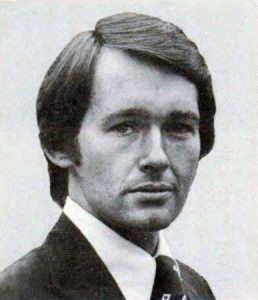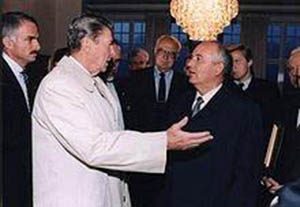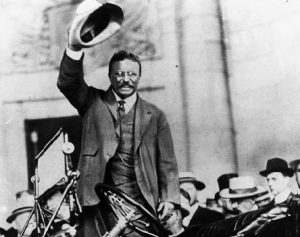Is the Green New Deal Too Radical?
CONNECTIONS
The Pulse and Politics of the Environment, Peace, and Justice
Bob Musil, President, Rachel Carson Council
“In nature nothing exists alone.”
“The aim of science is to discover and illuminate truth. And that, I take it, is the aim of literature, whether biography or history… It seems to me, then, that there can be no separate literature of science.”
“If the Bill of Rights contains no guarantee that a citizen shall be secure against lethal poisons distributed either by private individuals or by public officials, it is surely only because our forefathers, despite their considerable wisdom and foresight, could conceive of no such problem.”
— Rachel Carson
05-14-19

Senator Ed Markey of Massachusetts unveils the Green New Deal in front of the U.S. Capitol on February 7. Alex Wong/Getty Images
I am standing at a classic Washington political event, wine glass in hand, next to Senator Ed Markey (D-MA), co-sponsor, with Rep. Alexandria Ocasio-Cortez (D-NY), of the Green New Deal resolution. I can feel the heat as a leader of an environmental group comes up and confronts Markey. “The Green New Deal is too radical for my members,” she blurts out. “It is going to cost us with moderates and independents! You have to focus on climate change, not things like income inequality!”
I am stunned. Markey and I co-hosted a gathering of nearly 5,000 advocates just for the DC Lobby Day for the Nuclear Freeze when I worked at SANE back in the 1980s. In his youth, Markey was the only member of Congress to address the historic and huge million-person disarmament march in Central Park on June 12, 1982; he and I also co-hosted ad hoc hearings on Capitol Hill for Navajo uranium miners suffering from lung cancer and other diseases caused by digging out the yellow gold needed to make America’s nuclear bombs. The nuclear freeze helped push even Ronald Reagan toward a disarmament stance, leading to direct talks at summits with Mikhail Gorbachev in Reykjavik, Geneva, and Washington, and, ultimately, the INF Treaty and later cuts in nuclear weapons. Markey, a shrewd and savvy politician, understood early on that both rousing the public and finding policy and legislative solutions to complex problems are essential.
The climate crisis, like the threat of nuclear war at the height of the Cold War, needs a rallying cry, and it needs action — fast. Demonstrators have filled the streets, circled the White House, been arrested en masse, and, a majority of Americans, including business leaders and Generals, support strong efforts to ameliorate climate change. The only obstacles remaining are found in the Trump White House and the Mitch McConnell-led, Republican U.S. Senate.
As with other major mobilizations when the United States and the world were similarly threatened – by the Great Depression and by Nazi aggression — the answer, finally, is political. Individual lifestyle changes, education, organizing, and civil disobedience — as important as they are — are not enough. We need strong new leadership in the White House and a Congress that will legislate and take bold action to fight climate change and reduce the immoral levels of American social and income disparity. That is why the Green New Deal as a rallying cry, as an aspirational goal, is critical. That is why it is so significant that its co-sponsor, Alexandria Ocasio-Cortez, the 29- year old first-year Congresswoman from Queens, with over 4 million Twitter followers, chose to go into politics. It matters that she is the first woman member of Congress, and the youngest, ever to preside over the House of Representatives — as Democratic members do on a rotating basis — to relieve Speaker Nancy Pelosi. It sends a strong signal that activist youth and minorities — the future of American reform movements — need to engage in politics and push the system that we have — rather than simply rail against it from outside.
For any outside-inside political strategy to work, the engaged and active public — youth, minorities, labor, liberal religious groups, and educated, affluent urban and suburban activists must be vocal and push the system hard. Calls to compromise from the beginning must be resisted. Time enough for allies inside the Congress, statehouses, and city councils to work out the inevitable legislative compromises. But only after the full-throated roar of the Green New Deal Coalition is heard and felt.
The early, positive effects of the Green New Deal can already be seen — in the passage in the House of the first climate legislation in a decade, (H.R. 9 to support the Paris Climate Accords) in some Republican members of the House and Senate starting to speak in favor of fighting global climate change, and in recent polls showing overwhelming support for the GND — even after President Trump has Tweeted and ridiculed it and Ocasio-Cortez repeatedly.
In those polls, Democratic support for the GND has remained overwhelming — even after Republicans have falsely claimed it could cost ten trillion dollars. But Republican and independent support has declined. Then isn’t Senator Markey’s environmental accuser at our reception — who fears that the GND could cost political, and, hence, electoral support — correct?
This indeed is the crux of the debate over the GND and over environmental (and thus Democratic) electoral strategy. Ocasio-Cortez was confronted with this question almost immediately after her election. What about the Midwest, she was asked? AOC understood that the question presumed that the 2016 Presidential election was lost because of white working class voters, especially in Wisconsin and Michigan, who voted for Donald Trump when they had previously supported Barack Obama. (Ignore for now Russian interference and votes for Green Party candidate Jill Stein that were greater than Trump’s margin of victory in Michigan and Wisconsin) Ocasio-Cortez and numerous commentators pointed out that such views of the Midwest were stereotypical and that specific policies espoused by progressives were actually popular there.
Participation by African Americans fell between 2012 and 2016. Why? The Clinton-Kaine ticket was decidedly centrist, cautious and white (and the Clinton campaign assumed victory in the “blue” Rust Belt states and mostly ignored them).
Ocasio-Cortez and others correctly pointed out that large numbers of Midwesterners are African American and other minorities living in urban areas like Detroit. They need to be inspired, mobilized, and brought out to vote. In short, Michigan and other swing states could be won in 2020 if the Presidential ticket and party platform offered inspiration and real hope for the large number of voters whose views and needs are too often ignored.
This difference in strategy was brought home recently when candidate and former Vice President Joe Biden was reported as seeking a “middle ground” on climate change. Biden and his campaign have already assumed the heir apparent stance that ultimately doomed Hillary Clinton. And Biden has made abundantly clear that his campaign is aimed at wooing back those white working class voters who abandoned the Democrats for Donald Trump. According to Reuters, Biden would be “supportive of nuclear energy and fossil fuel options like natural gas and carbon capture technology.” Given the massive and vocal opposition to fracking, pipelines and natural gas, to coal, and to nuclear energy among environmentalists and the Democratic base, this is a formula designed to suppress enthusiasm, contributions, volunteers, and turnout, while further fueling Green Party support than can be decisive and destructive (for liberal Democrats) in close elections.
No surprise then that AOC and other Green New Deal advocates immediately took aim at Biden. “There is no “middle ground” Ocasio-Cortez Tweeted. “We’re not going to solve the climate crisis w/this lack of leadership. Our kids’ lives are at stake.” This is precisely the job for activists inside and out of the Congress — to keep the strongest response to climate change, the plight of minorities, and income inequality at the center of political debate and strategy. Joe Biden and other candidates have to win the Democratic nomination first. They are politicians and will respond to organized and vocal constituencies, including pressure now from Green New Deal activists who will be well-represented in primaries.
I did not get to ask Ed Markey’s worried environmentalist what exactly she and her members might find off-putting in the Green New Deal. I have read the resolution carefully. Is it the affirmation that frontline, environmental justice communities must be included and heard in discussions of climate change? Perhaps it is that income inequality and lack of medical care and educational opportunity must be also addressed? If this is her fear, this is dangerous ground to stand on for a movement still largely affluent, white and middle class.
Franklin Roosevelt was attacked and accused of socialism with his call for the original New Deal. Same for Teddy Roosevelt before him who was attacked for his call to bust up the trusts that were creating a plutocracy in the United States, Both Roosevelts spoke boldly and offered a vision of a better America. Both triumphed politically. Joe Biden and others of the nearly two dozen Democratic candidates who want to reassure centrist and white voters that we don’t really need big change will lose unless they take on the mantel of the New Deal and the Green New Deal.
I didn’t have the time or the energy to engage my fellow environmental leader over the Green New Deal she is so opposed to. So I spoke again directly to Ed Markey. “Ed. I’m concerned the Green New Deal doesn’t go far enough! You don’t even include nuclear disarmament in it!” Markey laughed. “You’re right. Thank you, Bob! We’ll have to consider that.” Humor broke the tension in the difficult conversation that was emerging. But such divides between environmentalists are likely to recur as the political season gets even more heated as the first primaries approach. I, for one, believe that the boldness and momentum of the growing climate movement that has emerged must be maintained.
The Green New Deal epitomizes the success to date of the current wave of activism for environmental justice. To swerve to the center now, to compromise early and often, and to try to assure centrists and Trump supporters that no serious change will be needed portends a repeat of the failed 2016 election and a triumphant, autocratic second term for Donald Trump.












